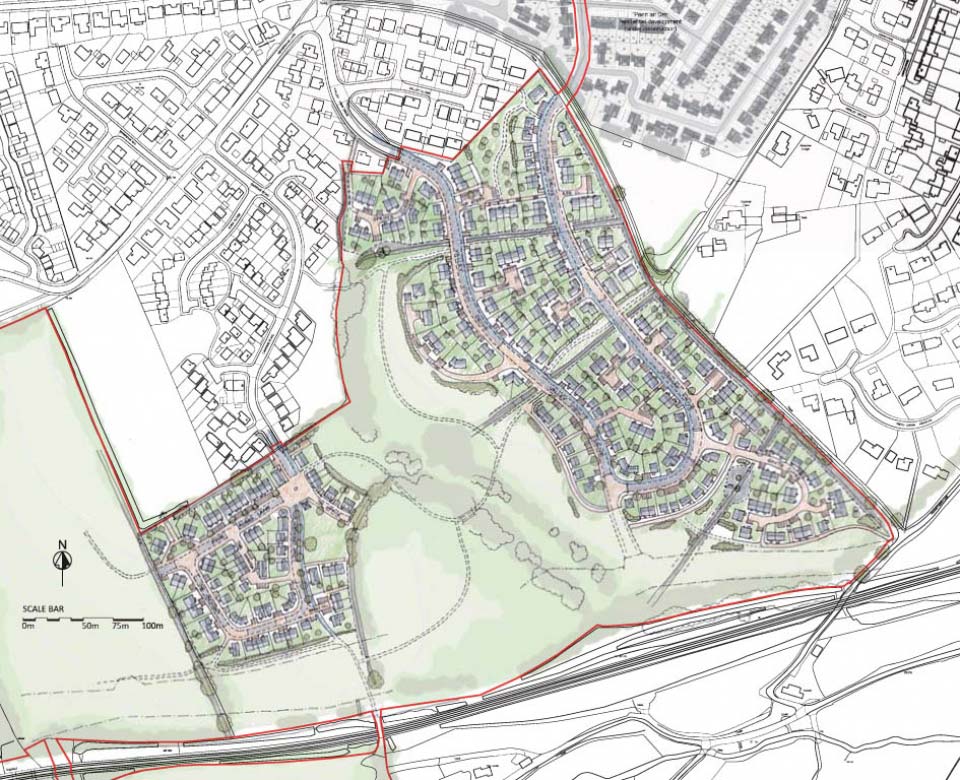By Mark Dawes, Managing Director, CAD Architects.
Most people would agree that, for our local communities to continue to grow and thrive, we need a steady supply of appropriate new housing. Chronic under-supply in past years in Cornwall has led to house prices being distorted leaving many local families priced out of the market. New housing is also needed to support local economic growth and new jobs. When the development of new housing stagnates, this can have a serious impact socially and on wider economic activity in the local area.
Despite this pressing need, new housing development remains a very controversial area which provokes much heated debate. This is particularly true in Cornwall, which is an outstandingly beautiful part of the country. Local people naturally want to preserve the unique character of their area. Also, much of the local housing stock is very ‘rural’ in its nature. In fact, over 40% of the population of Cornwall live in settlements of less than 3,000 people. In this context, almost any proposed new housing development can be instinctively perceived as intrusive or out of keeping with its surroundings.
There can also be the perception that developers can somehow use their influence to drive through new schemes and proposals which are out of step with the needs of the local community. Nothing is further from the truth. Naturally, with any development there is likely to be a certain percentage of people who are vehemently opposed to it, and they can be very vocal in putting their views across. But the local planning regime is regulated by a significant body of planning policy and such policies have been widely consulted upon before their adoption. Any proposed development must comply with this policy criteria, which has been designed to reflect the needs of local people.
At CAD Architects, we have spent many years building a comprehensive understanding of the local and national planning policy requirements and we bring this to bear on any new housing development that we work on. Having designed and coordinated the planning applications for many high-profile developments, we have learned how to build constructive relationships and dialogue with planning officers and with the community, to ensure that the schemes we design have the best chance of achieving wide acceptance.
The local planning regime has many complex layers, but can be broken down into four key areas of importance with regard to the new housing development:
National Planning Policy Framework (NPPF): This sets out the Government’s planning policies for England and describes how these will be applied. The NPPF provides the overall framework within which local councils and communities need to operate when developing their own local plans for new housing. The Government recently announced the first major overhaul to the NPPF in over 6 years. The Government has made no secret of its determination to increase the pace at which new housing is delivered.
The Cornwall Local Plan (CLP): This is a highly detailed document which maps out the Council’s long-term strategy for new development in the area. It was formally adopted in November 2016 and covers the period up until 2030. The aim of the plan is to encourage appropriate development which meets the needs of local residents and allows the type of economic growth that is in line with the Council’s strategy. It specifically aims to avoid unplanned, speculative housing. Within the CLP, the Council has a target for delivering a minimum of 52,000 new homes over a 20-year period, at an average rate of 2,625 per year.
The CLP sets out four broad objectives for all new developments which are: to support the economy, to enable self-sufficient and resilient communities, to promote good health and wellbeing for everyone, and to make the most of our environment. The Council believes that the CLP will help make better places, where people want to live, work and play. It is also designed to facilitate 38,000 new jobs, with new homes to meet the needs of our residents, and new schools and infrastructure, as well as protecting and enhancing the environment. A full copy of the CLP can be viewed via the Cornwall Council website at www.cornwall.gov.uk/localplancornwall
The Cornwall Allocations Development Plan (Allocations DPD): Below the CLP sits the Allocations DPD. This identifies the particular locations where new housing will be delivered in ten towns and conurbations in Cornwall and in two eco-communities. The Allocations DPD also looks at the specific development strategy for these specific towns, examining the profile of the local population, their main sources of employment, and the infrastructure that will be needed to support each local community’s requirements.
Community Infrastructure Levy (CIL): The CIL is a mechanism that allows local authorities to raise funds from developers who are building new homes in their area. The CIL helps to pay for the new infrastructure that may be needed as a result of the housing development. This could include roads, schools, health centres, parks and green spaces. The CIL is charged at a fixed rate per square metre of the floor space of new dwellings.
At CAD Architects, our team are highly skilled at factoring in all the above detailed requirements when they commence work on any new housing development. For any new housing development to be successful at progressing through the planning process, it must therefore be able to demonstrate how it will meet the needs of the local community, now and into the future.
